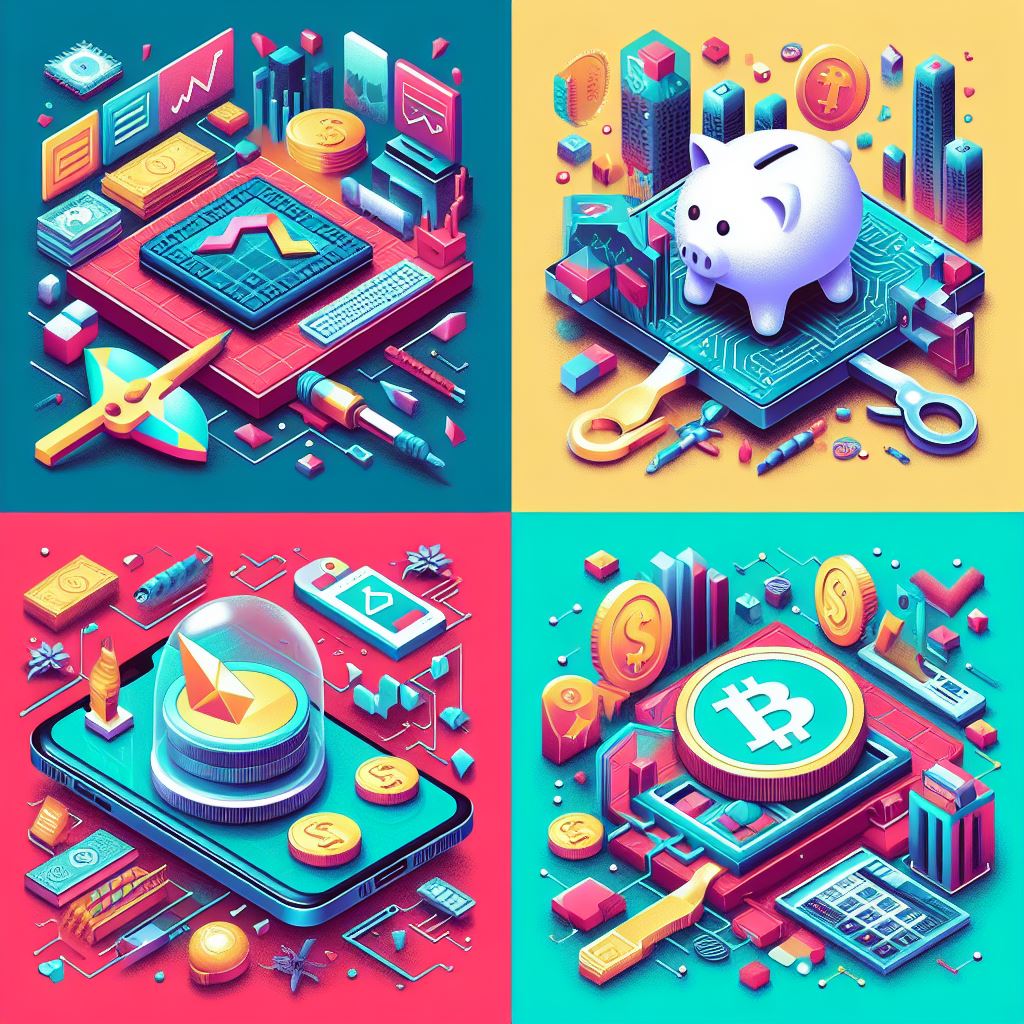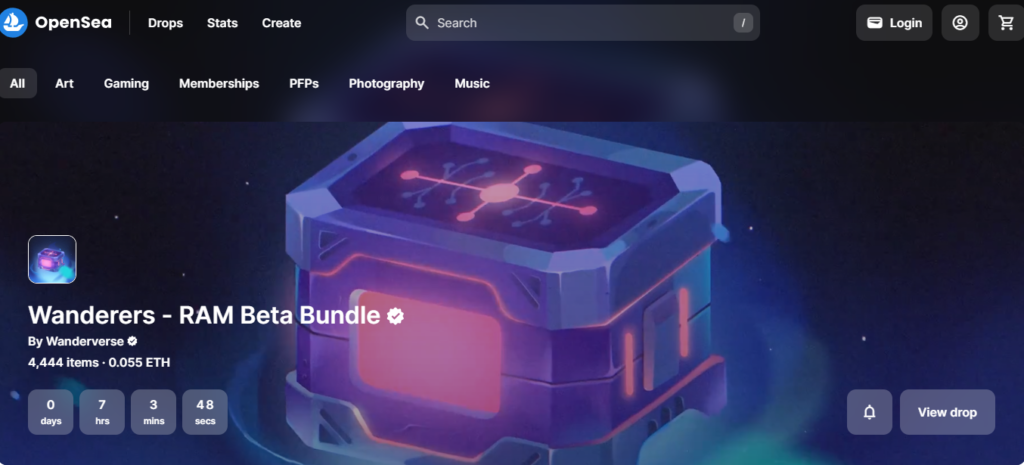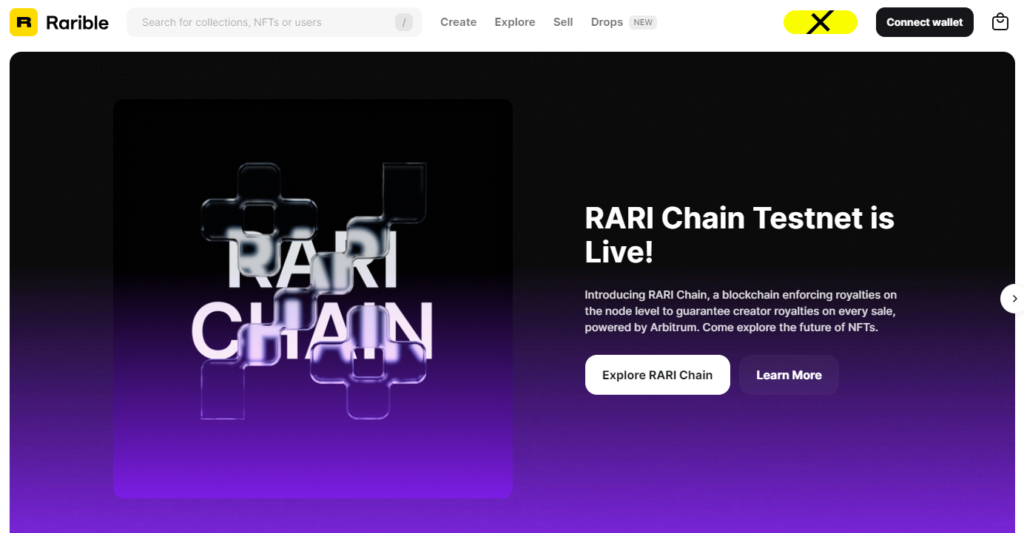When selecting an NFT marketplace, here are some of the most important factors to evaluate:
Transaction Volume – Platforms with higher volume tend to have more asset listings and buyer/seller activity. This improves liquidity.
Fees – Most marketplaces charge transaction fees around 2-5%. Lower is generally better for sellers.

Accessibility – Is the platform easy to use for beginners? Some cater more towards pros.
Payment Currencies – What crypto and/or fiat currencies does the marketplace support?
Security Protections – Robust security is a must. Two-factor authentication and other measures prevent fraud.
Specialization – Some marketplaces focus on particular NFT categories like gaming, sports, or art.
Creator Support – Platforms offer varying tools/services to support NFT creators and artists.
Top 10 NFT Marketplaces Comparison
With the key evaluation criteria in mind, here is an overview of 10 leading NFT marketplaces along with side-by-side comparisons of their features.
Marketplace Overviews
1. OpenSea
As the largest NFT marketplace by transaction volume, OpenSea leads the pack with strong liquidity and a massive selection of NFTs across categories. It’s best suited for buyers, sellers, and creators focused on volume.

- Founded: 2017
- Key Features: Large selection and volume, better for pro traders, powerful search and filtering tools
- Top Categories: Art, domain names, virtual worlds, trading cards, sports, utilities
- Accepted Payment Methods: 100+ cryptocurrencies
2. Solana Marketplace
Solana Marketplace is a top destination for buying, selling, minting, and auctioning Solana NFTs specifically. With art, music, photography, and more, it caters to the fast-growing Solana community.
- Founded: 2021
- Key Features: Specialized Solana NFT focus, fixed low fees, auctions
- Top Categories: Art, music, photography, utilities
- Accepted Payment Methods: SOL, USDC
3. CryptoPunks
One of the original NFT projects, CryptoPunks are 10,000 collectible digital punk characters stored on the Ethereum blockchain. The marketplace is now open for punk owners/collectors to buy and sell.
- Founded: 2017
- Key Features: Vintage original NFT project, highly exclusive punks marketplace
- Top Categories: CryptoPunks only
- Accepted Payment Methods: ETH
4. NBA Top Shot Marketplace
Catering to professional basketball fans, NBA Top Shot allows users to buy, sell, and trade authentic video highlight NFT “moments” of NBA gameplay. There’s also pack drops, challenges, contests, etc.
- Founded: 2019 in partnership with NBA
- Key Features: Exclusive licensed NBA content, highly engaged sports community, gamified contests/packs
- Top Categories: Licensed NBA moments
- Accepted Payment Methods: USD, credit card
5. Rarible
Rarible is a community-owned platform that offers a wide range of art and collectibles minted as NFTs. It’s known for active user engagement and governance through its RARI token.

- Founded: 2020
- Key Features: Community-oriented, ability to fractionalize NFTs, offers royalty distribution
- Top Categories: Art, music, digital assets, metaverse items
- Accepted Payment Methods: 120+ cryptocurrencies
6. Axie Marketplace
The Axie Marketplace is dedicated to creatures, lands, and items from the Axie Infinity gaming metaverse. It features high-volume trade activity around gaming NFT assets specifically.
- Founded: 2018
- Key Features: Game-specific marketplace, extensive gaming NFT assets, high trade volumes
- Top Categories: Axies, Axie lands/items, Ronin tokens
- Accepted Payment Methods: Cryptocurrency only
7. SuperRare
SuperRare focuses on scarce, single-edition digital art NFTs from established and up-and-coming artists. Artists can also mint and showcase their work directly.
- Founded: 2018
- Key Features: Curated digital art, social features, direct artist minting/showcasing
- Top Categories: Unique digital artwork, music
- Accepted Payment Methods: Cryptocurrency only
8. Foundation
Foundation is an artist-centric platform for showcasing and auctioning unique digital creations as NFTs. It offers artist profiles, creation tools, exclusive drops, and more.
- Founded: 2020
- Key Features: Artist-focused features, auctions, exclusive community
- Top Categories: Artwork, photography, music
- Accepted Payment Methods: Cryptocurrency, credit card
9. Mintable
Mintable provides a user-friendly NFT marketplace and minting platform accessible to creators at any level. Artists can easily upload and sell artwork with no coding required.
- Founded: 2018
- Key Features: Easy NFT creator tools, minimal platform fees, custom royalty structures
- Top Categories: Art, music, photography, domains
- Accepted Payment Methods: Cryptocurrency only
10. KnownOrigin
UK-based KnownOrigin allows creators to easily mint, showcase, and sell digital artwork with secure ownership provenance on the blockchain. It focuses on digital art and collectibles.
- Founded: 2018
- Key Features: Digital art specialty, fixed low fees, batch minting capabilities
- Top Categories: Digital artwork, collectibles
- Accepted Payment Methods: Cryptocurrency only

| Marketplace | Founded | Fees | Payment Methods | Beginner Friendly | Security | Top Categories |
|---|---|---|---|---|---|---|
| OpenSea | 2017 | 2.5% | Cryptocurrency | intermediate | robust | Art, domains, virtual worlds, cards, sports, utilities |
| Solana Marketplace | 2021 | <1% | SOL, USDC | intermediate | robust | Art, music, photos |
| CryptoPunks | 2017 | None | ETH | advanced | robust | Just punks |
| NBA Top Shot | 2019 | 5% + credit card fees | Credit card, crypto | beginner | robust | NBA highlight videos |
| Rarible | 2020 | 2.5-5% | 120+ cryptocurrencies | intermediate | robust | Art, music, metaverse items |
| Axie Marketplace | 2018 | 4.25% | Cryptocurrency | advanced | robust | Axie Infinity assets |
| SuperRare | 2018 | 3% | Cryptocurrency | intermediate | robust | Scarce digital art |
| Foundation | 2020 | 10-15% | Crypto, credit card | intermediate | robust | Artwork, photos, music |
| Mintable | 2018 | Minimal | Cryptocurrency | beginner | robust | Art, music, photos, domains |
| KnownOrigin | 2018 | 2.5-5% | Cryptocurrency | beginner | robust | Digital artwork and collectibles |
As shown in the comparison table, platforms cater to different needs in areas ranging from fees and accessibility to security, specialization, and accepted payments. By matching the strengths of a marketplace to your priorities as a buyer, seller or creator, you can determine where to focus your trading activity.
For complete beginners, NBA Top Shot, Mintable, and OpenSea tend to offer the most intuitive user experience. But more advanced traders may prefer platforms like CryptoPunks or specialized gaming marketplaces like Axie Infinity.
Overall trading volume and liquidity is highest on mega platforms like OpenSea which leads the market – but they take a bigger cut of transactions. If keeping fees low is critical, Solana Marketplace, Rarible, or Mintable would be suitable alternatives.
Selling unique single edition artwork? Check out artist-focused SuperRare or Foundation. Looking to trade metaverse gaming assets and NFTs? Axie Infinity and marketplaces built for particular games have the assets you want.
Do You Need a Special Crypto Wallet for NFTs?
To purchase, store, and trade NFTs on any marketplace, you need a digital wallet compatible with Ethereum or whichever blockchain the NFT is minted on.
While you could use a general crypto wallet like MetaMask, specialized NFT wallets like Venly and Trust Wallet now exist to provide added features tailored to non-fungibles.
Benefits of a purpose-built NFT wallet include:
- Better visualization of owned NFT assets
- Ability to access meta-data on each NFT
- Improved display of artwork traits on NFTs
- Some offer built-in marketplaces or exchanges
- May have faster transaction speeds or reduced network fees
The right NFT wallet for you depends on which specific assets you own and what blockchains you use most. Do your research to choose one that aligns with your activity and priorities.
Are There Any Ways to Buy/Sell NFTs Without Crypto?
As blockchain-based assets, the vast majority of platforms require payment in cryptocurrencies – typically Ethereum or Solana. This allows decentralized, peer-to-peer transfer and trading without centralized authorities.
However, a few marketplaces like NBA Top Shot and Foundation do enable fiat currency purchases via credit card, PayPal, or bank transfer.
The main trade-off is that these platforms exert more control, shape community rules to align with legal regulations in fiat markets, and charge additional payment processing fees.
Purchasing NFTs with a regular credit card also fails to provide the privacy advantages inherent to pseudonymous crypto wallets and transfers. But for beginners, it eliminates the need to navigating holding cryptocurrency just to get involved.
Over time, allowing both fiat and crypto payments may become the norm across leading platforms as barriers to entry continue dropping.
Frequently Asked Questions About NFT Marketplaces
For those new to buying, selling, and trading NFTs, here are answers to some commonly asked questions.
What Exactly Are “Gas Fees” on NFT Marketplaces?
Platforms built on Ethereum and other blockchain networks charge variable “gas” fees to process transactions. This pays for the computing power required to perform the transaction and mint the NFT.
Factors like network congestion determine the gas fee at any given moment. When traffic is high due to spikes in activity, gas prices rise. When things are calm, they fall.
Marketplaces don’t directly control these gas fees – but some enable buyers to choose a “priority” speed for an extra fee. Top Shot covers gas as a benefit to users too.
Since gas fluctuates, it helps to track trends using tools like EthGasStation to schedule lower-cost transaction times. Levels between 15-30 Gwei are reasonable during off-peak hours.
What Royalties Do NFT Marketplaces Pay to Creators?
When an NFT sells on the secondary market after the initial sale, the original creator still gets a cut through automated royalty payments generally around 10%. However each NFT determines its own royalty structure.
For example on SuperRare, artists receive 85% royalties from secondary sales. And they pocket 95% from the first sale they make directly on the platform.
Royalty structures give artists ongoing incentive to engage with communities and promote their work. It functions like passive income that keeps generating whenever their art changes hands.
Through platforms like Foundation and Solana Marketplace, artists even score 100% from initial sales and control their own royalty splits for secondary ones.
Why Do Buyers Bid Blindly Without Knowing the Next Price?
To create exciting reveal moments and leverage psychological tactics to extract higher bids, some NFT auctions on platforms like Solana Marketplace happen “blind”.
Bidders place ever-increasing bids without knowing the current highest bid. They input their absolute max, hoping to win – but only the winner pays the amount to beat whatever the previous bid turned out to be.
This blind bidding forces bidders to consider what a piece may truly be worth to them before an adrenaline rush compromises reasoning and restraint.
Due to the intentionally mysterious nature, buyers may pay vastly different amounts for the same NFT. But creators are happy it helps attract higher overall sales values – so the blind format lives on.
What are Some Tips for Selling NFT Art Successfully?
For artists, photographers, musicians and creators hoping to sell NFTs successfully, here are some proven tips:
- Engage social platforms to slowly build a fanbase first rather than instantly trying to sell an NFT to strangers. Twitter, IG, and Discord work well.
- Add uniqueness and utility like exclusive content/access, voting rights, software access etc. to make collectors more eager to buy and hold the NFTs.
- Spread initial mints across multiple platforms to reduce dependency on a single marketplace and maximize overall distribution.
- Strategically hype launches through giveaways, collaborations with influencers, and event-style releases around the NFT drop date.
- Promote actively after selling too through social media and community channels to stimulate secondary sales.
With the right prep work marketing an engaged audience combined with a unique offering, most creators can sell at least some of their NFTs – assuming blockchain familiarity keeps increasing on the buyer side.
Conclusion: Evaluate Your Needs to Pick the Right NFT Marketplace
As we’ve explored, the NFT landscape contains a diverse array of marketplaces to buy, sell, mint, and auction non-fungible crypto assets. But no single platform can meet every user’s needs and priorities.
As an NFT buyer, it pays to check trading volumes, security protections, specialization and fees on platforms that interest you before joining. Analyze whether the assets available match your interests too.
For sellers, creator support services, fees, royalty structures, and category focuses also require evaluation before picking places to mint and list work.
Some NFT creators even spread initial releases across 2-3 platforms then analyze sales data to determine where engaged communities already exist around their work.
But overall, don’t let the barrage of options overwhelm you. Now that you understand the key decision factors, take time to research and compare marketplaces that seem to cater directly to your goals as either a buyer, seller, trader or artist.
The world of NFTs only looks set to keep expanding in 2023 and beyond. So there’s never been a better time to find the right platform, create an account, connect a compatible wallet, and start interating in this brave new digital economy of crypto-collectibles.
